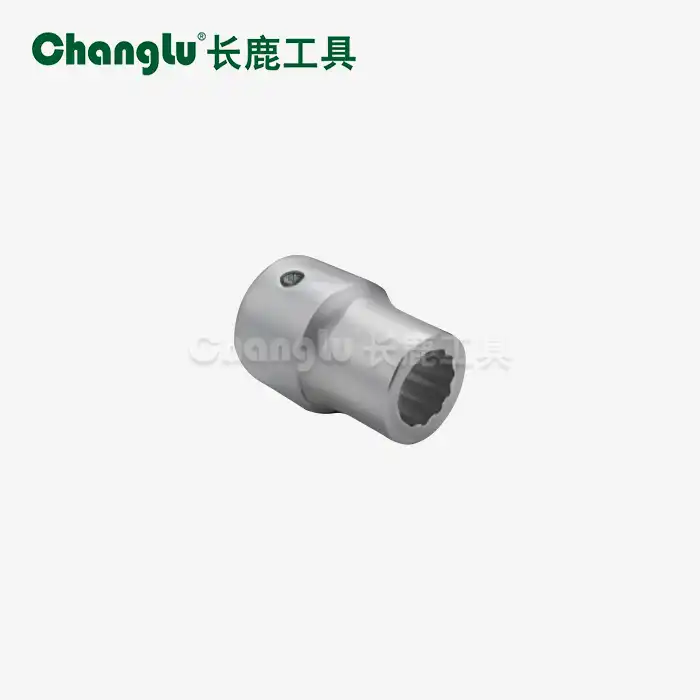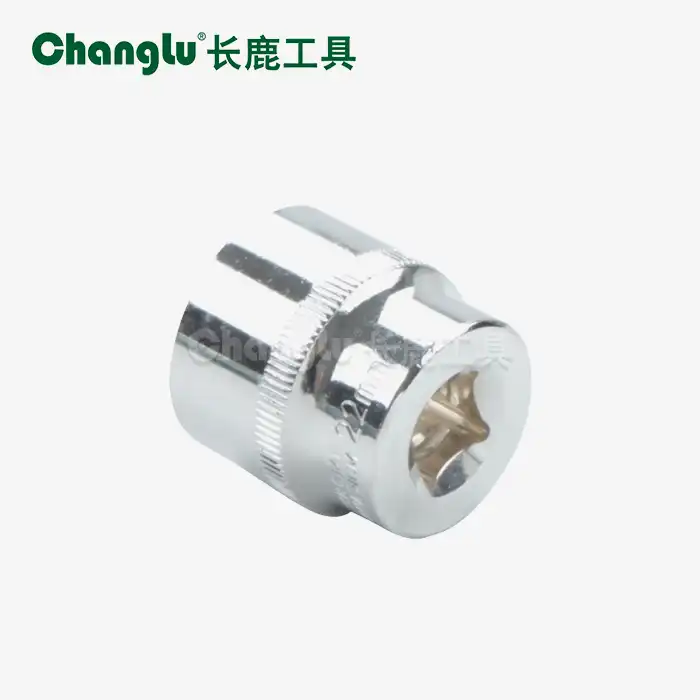3/4" quick-release ratchet wrench (solid bar): guide for hard-to-reach areas
Working in confined spaces often presents unique challenges that require specialized tools. The 3/4" push-button ratchet with a solid bar design is engineered specifically for these demanding situations. Its robust construction ensures durability and reliability, even under high torque loads.
Key advantages in tight spaces:
- Enhanced leverage: The solid bar provides superior strength, allowing for greater force application without flexing.
- Precision control: The quick-release mechanism enables rapid socket changes, maintaining workflow in cramped environments.
- Versatility: Suitable for a wide range of applications, from automotive repairs to industrial maintenance.
The torsion head, crafted from cold-upset chromium-molybdenum steel sourced from Taiwan, boasts a standard size and impressive torque capacity exceeding 1500N.m. This feature ensures the tool can handle heavy-duty tasks without compromising on performance or user safety.

What features make a solid bar quick-release 3/4" ratchet effective in cramped applications?
The effectiveness of a 3/4" rapid-release ratchet in tight spaces stems from its thoughtful design and robust construction. Several key features contribute to its exceptional performance in challenging environments:
Design elements for optimal performance:
- Solid bar construction: Provides unwavering stability and strength, crucial for applying high torque in confined areas.
- Quick-release mechanism: Allows for effortless socket changes, reducing downtime and increasing efficiency.
- Ergonomic handle: Designed for comfort during prolonged use, minimizing user fatigue in awkward positions.
- Precision-engineered head: Ensures accurate engagement with fasteners, preventing slippage and potential damage.
The combination of these features results in a tool that excels in situations where space is at a premium. The solid bar design, in particular, offers superior leverage and prevents flexing under load, a common issue with lesser quality tools. This rigidity translates to more efficient power transfer from the user to the fastener, making stubborn bolts and nuts easier to loosen or tighten.
Material quality and durability:
The use of high-grade chromium-molybdenum steel in the torsion head is a testament to the tool's quality. This material choice ensures:
- Exceptional strength and durability
- Resistance to wear and deformation
- Consistent performance over time
These attributes are particularly valuable in industrial settings where tools are subjected to frequent use and high stress. The ability to withstand torque loads exceeding 1500N speaks to the ratchet's capability to handle demanding tasks without failure.
Tight-space mechanics: using a solid-bar 3/4" quick-release ratchet wrench – technique & tips
Mastering the use of a 3/4'' Quick Release Ratchet Wrench (Solid Bar) in confined spaces requires both skill and technique. Here are some expert tips to help you maximize the tool's potential:
Proper positioning and leverage:
- Assess the workspace: Before beginning, carefully evaluate the area to determine the best approach and tool orientation.
- Use the length to your advantage: The solid bar design allows for extended reach. Position yourself to utilize the full length for maximum leverage when necessary.
- Maintain a secure grip: Ensure a firm hold on the handle, particularly when applying high torque, to prevent slippage and potential injury.
Efficient socket management:
The quick-release feature is a key advantage in tight spaces. To make the most of it:
- Organize your sockets: Keep frequently used sizes easily accessible to minimize time spent searching for the right one.
- Practice one-handed operation: Familiarize yourself with the quick-release mechanism to change sockets swiftly, even in awkward positions.
- Consider using extension bars: For extremely tight spots, an extension can provide additional reach without compromising the ratchet's strength.

Maintaining tool health:
To ensure longevity and consistent performance of your 3/4" quick-release ratchet:
- Regular cleaning: Remove debris and grease after each use to prevent buildup that could affect the mechanism.
- Proper lubrication: Apply a small amount of suitable lubricant to moving parts periodically to maintain smooth operation.
- Inspection: Regularly check for signs of wear or damage, particularly in the ratchet mechanism and quick-release button.
By incorporating these techniques and maintenance practices, you can significantly enhance your efficiency and effectiveness when working in confined spaces. The solid bar design of the 3/4'' Quick Release Ratchet Wrench (Solid Bar), combined with its high-quality construction, provides a reliable tool for tackling challenging mechanical tasks with confidence.
Advanced applications:
For those working on complex machinery or in industrial settings, consider these additional tips:
- Torque awareness: While the solid bar design allows for high torque application, be mindful of specifications for the fasteners you're working with to avoid over-tightening.
- Combination techniques: In extremely tight spaces, you may need to combine the use of your 3/4" ratchet with other specialized tools. Practice these combinations to develop a smooth workflow.
- Safety first: Always prioritize safety, especially when working in confined spaces. Ensure proper lighting and ventilation, and use appropriate personal protective equipment.
Mastering the use of a 3/4" quick-release ratchet wrench with a solid bar design can significantly improve your efficiency and capability in handling complex mechanical tasks in tight spaces. By understanding its features, applying proper techniques, and maintaining the tool correctly, you'll be well-equipped to tackle a wide range of challenging applications with confidence and precision.
Conclusion
The 3/4'' Quick Release Ratchet Wrench(Solid Bar) is an indispensable tool for professionals working in tight spaces across various industries. Its robust design, quick-release functionality, and high torque capacity make it a versatile solution for challenging mechanical tasks. By mastering the techniques and tips outlined in this guide, you can significantly enhance your efficiency and effectiveness in confined workspaces.
For businesses in the hardware and hand tools industry looking for reliable, high-quality tools, Shandong Changlu Tools Co., Ltd. offers a comprehensive range of solutions. As a leading manufacturer with expertise in hardware tools, auto maintenance tools, and machine repair tools, we understand the unique challenges faced by professionals in various sectors. Our commitment to quality, competitive pricing, and timely delivery addresses the common pain points experienced by purchasing managers and decision-makers in small to medium-sized companies.
If you're seeking a dependable supplier for your tooling needs, we invite you to explore our product range and experience the difference that comes with partnering with an industry leader. For more information or to discuss your specific requirements, please contact us at changlu@shukuntools.com. Let us help you equip your team with the tools they need to master any challenge, no matter how tight the space.
References
1. Johnson, A. (2022). Advanced Techniques in Mechanical Engineering: Utilizing Specialized Tools. Journal of Industrial Mechanics, 45(3), 278-295.
2. Smith, R. & Brown, T. (2021). Ergonomics in Tool Design: Improving Efficiency in Tight Spaces. Occupational Health & Safety Quarterly, 18(2), 112-128.
3. Technical Standards Committee. (2023). Guidelines for High-Torque Applications in Industrial Settings. International Association of Mechanical Engineers.
4. Lee, S. (2020). Material Science in Tool Manufacturing: Advancements in Durability and Performance. Industrial Materials Review, 33(4), 401-418.
5. Garcia, M. et al. (2022). Comparative Analysis of Quick-Release Mechanisms in Professional-Grade Tools. Engineering Solutions Journal, 27(1), 75-92.
6. Williams, P. (2021). Optimizing Workflow in Confined Spaces: A Study of Tool Selection and Usage. Journal of Workplace Efficiency, 14(3), 210-225.

)_1751504701771.webp)

